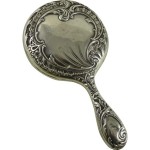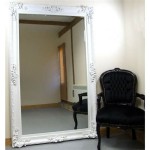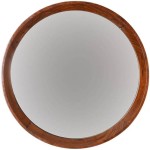How to Antique Mirror Glass
Antiquing mirror glass involves creating the appearance of age and wear on a new mirror, adding character and a vintage aesthetic. This technique can transform an ordinary mirror into a decorative piece, suitable for various interior design styles. This article details the process of antiquing mirror glass, offering various methods and tips for achieving desired results.
Choosing the Right Mirror
The type of mirror selected influences the final outcome. While any new mirror can be antiqued, thinner mirrors are generally easier to work with, especially for techniques involving physical distressing. The mirror's shape and size should also be considered in relation to the overall project and desired aesthetic.
Preparing the Mirror Surface
Proper preparation is crucial for successful antiquing. The mirror surface must be thoroughly cleaned and degreased. Any dust, fingerprints, or residue can interfere with the antiquing process, leading to uneven results. Cleaning with a glass cleaner followed by a degreaser like rubbing alcohol ensures proper adhesion of the antiquing solutions.
Creating the Antique Effect: Various Methods
Several methods can be utilized to achieve an antique look. Each offers a unique finish and level of complexity.
Method 1: Applying Antiquing Solution
This method involves spraying a commercially available antiquing solution onto the back of the mirror. These solutions typically contain chemicals that react with the mirror backing, creating a speckled or aged appearance. Following the manufacturer’s instructions precisely is essential for achieving the desired effect. Even application is critical for a uniform antique finish.
Method 2: Using Paint and Glazes
This technique provides greater control over the antiquing process. Darker paint colours, like blacks, browns, or greys, are typically applied to the back of the mirror as a base coat. Once dry, a glaze, often in a contrasting or metallic shade, is applied over the base coat and partially wiped away, revealing the darker undercoat in a distressed pattern. This method allows for artistic expression and the creation of unique antique finishes.
Method 3: Distressing with Chemicals
Certain chemicals, such as hydrochloric acid (muriatic acid) can be used to etch the mirror's backing, creating an aged look. This method requires extreme caution and proper safety precautions, including wearing protective gloves, eye protection, and working in a well-ventilated area. The acid is applied in a controlled manner, allowing it to react with the mirror backing for a specific duration. This technique can produce a more authentic, aged appearance, but requires careful execution.
Method 4: Creating a Faux Mercury Glass Effect
This method mimics the look of aged mercury glass, which often exhibits a speckled, slightly tarnished silver finish. This can be achieved by layering various paints and glazes on the back of the mirror. A base coat of silver paint is typically followed by a layer of darker tinted glaze which is then partially removed to reveal the silver underneath. This process requires careful blending and layering to achieve the desired effect.
Sealing and Protecting the Antiqued Finish
Once the desired antique effect is achieved, sealing the back of the mirror is vital to protect the finish. A clear sealant, like varnish or lacquer, prevents the antiquing solution or paint from chipping or peeling. Ensuring proper ventilation while sealing helps to prevent fumes from building up.
Framing and Displaying the Antiqued Mirror
The frame chosen for the antiqued mirror can significantly enhance its overall appearance. Frames with ornate details or distressed finishes complement the antique aesthetic. The frame colour should also be considered; darker frames tend to accentuate the aged look, while lighter frames provide a softer contrast.
Troubleshooting Common Issues
Uneven antiquing can occur if the mirror surface isn't properly cleaned or if the antiquing solution is applied inconsistently. Streaks or drips can be mitigated by working in thin layers and blending carefully. If the antiquing effect appears too intense, it can sometimes be softened by carefully wiping away excess solution or glaze with a clean cloth before it dries fully.

The Ultimate Guide On Diy Antique Mirrors So Much Better With Age

Diy Antique Mirror Easy To Do And Looks Authentic My Creative Days

The Ultimate Guide On Diy Antique Mirrors So Much Better With Age

How To Antique A Mirror From The Front With Paint Average But Inspired

How To Antique A Mirror Easy Diy Tutorial

The Ultimate Guide On Diy Antique Mirrors So Much Better With Age

Antique Mirror Glass Safety Replacements

Antique Mirror Sample

Statement Antiqued Mirror Antique Glass Tiles Wall

Antique Mirror Glass Devlin In Design Specialist Decorators








